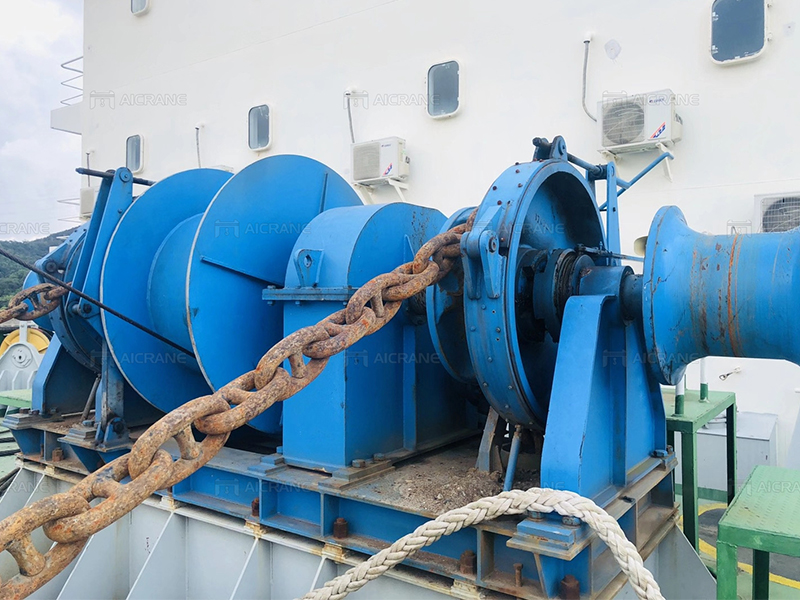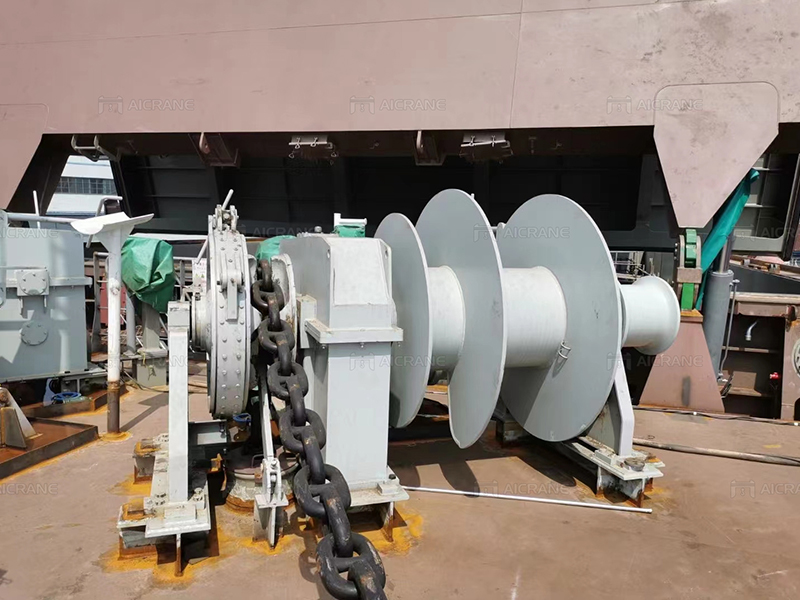The maritime industry has witnessed significant technological advancements over the years, leading to increased efficiency, safety, and overall operational capabilities of vessels. Among these innovations, the integration of combined anchor windlass and mooring winch systems has emerged as a game-changer in ship handling and anchoring operations. This article explores the applications and benefits of these integrated systems, highlighting their crucial role in modern maritime practices.

I. Evolution of Anchor Windlass and Mooring Winch Systems:
Traditionally, ships were equipped with separate systems for anchor handling and mooring operations. However, advancements in engineering and technology have led to the development of integrated anchor mooring winch solutions that combine both functions into a single system. This evolution addresses the need for more streamlined and efficient processes, reducing the complexity of the equipment on board.
II. Understanding Combined Anchor Windlass and Mooring Winch Systems:
A combined anchor windlass and mooring winch system is a comprehensive solution designed to handle both anchoring and mooring operations seamlessly. The anchor windlass is responsible for dropping and retrieving the anchor, while the mooring winch manages the ropes and cables used to secure the vessel to the dock or another ship.
These integrated systems are equipped with advanced features such as automation, dynamic positioning, and enhanced control interfaces. The combination of these functions allows for smoother transitions between anchoring and mooring activities, minimizing downtime and optimizing overall vessel efficiency.
III. Applications in Modern Maritime Practices:
A. Enhanced Efficiency:
One of the primary advantages of combined anchor windlass and mooring winch systems is the enhanced efficiency they bring to maritime operations. The seamless integration of anchor handling and mooring functions eliminates the need for separate equipment, reducing the overall weight and footprint on the vessel.
This efficiency is particularly crucial in time-sensitive situations, such as emergency anchoring or rapid mooring in adverse weather conditions. The streamlined operation ensures that the vessel can respond promptly to changing circumstances, enhancing both safety and operational effectiveness.
B. Improved Safety:
Safety is paramount in maritime operations, and the integration of anchor windlass and mooring winch systems contributes significantly to a safer working environment. With advanced automation features, the risk of human error is minimized during critical operations, reducing the likelihood of accidents or injuries.
Additionally, these integrated systems often come equipped with real-time monitoring and feedback mechanisms, providing the crew with vital information about the status of the equipment and potential issues. This proactive approach to safety is invaluable in preventing accidents and ensuring the well-being of the crew and the vessel.
C. Flexibility in Operations:
Combined anchor windlass and mooring winch systems offer a high degree of flexibility in adapting to various operational scenarios. The integration allows for quick and seamless transitions between anchoring and mooring, enabling vessels to navigate different ports and environments with ease.
The flexibility extends to the types of vessels that can benefit from these integrated systems, ranging from small fishing boats to large container ships. This adaptability enhances the overall versatility of the vessel, making it well-suited for a wide range of maritime applications.

IV. Future Trends and Developments:
As technology continues to advance, the maritime industry can expect further innovations in combined anchor windlass and mooring winch systems. Some potential trends include:
A. Smart Automation:
The integration of smart automation technologies, including artificial intelligence and machine learning, could further enhance the efficiency and performance of these systems. Smart algorithms can optimize anchor and mooring operations based on real-time environmental conditions, contributing to fuel savings and reducing environmental impact.
B. Remote Operation and Monitoring:
With the increasing adoption of remote monitoring and control technologies, vessel operators may have the ability to manage anchor and mooring operations from onshore locations. This trend could revolutionize the way vessels are handled, allowing for more centralized and efficient control, particularly in challenging or hazardous environments.
C. Sustainable Solutions:
The maritime industry is undergoing a shift towards more sustainable practices, driven by environmental concerns and regulatory requirements. Future developments in combined anchor windlass and mooring winch systems may incorporate eco-friendly technologies, such as electric propulsion and energy-efficient components, to contribute to a greener and more sustainable maritime sector.
Conclusion:
The integration of combined anchor windlass and mooring winch systems represents a significant leap forward in the evolution of maritime technology. With improved efficiency, enhanced safety features, and adaptability to various operational scenarios, these integrated systems are reshaping the way vessels handle anchoring and mooring operations. As technology continues to advance, the maritime industry can look forward to further innovations that will contribute to a more efficient, safe, and sustainable future. For more info, click here https://winchmachines.com/